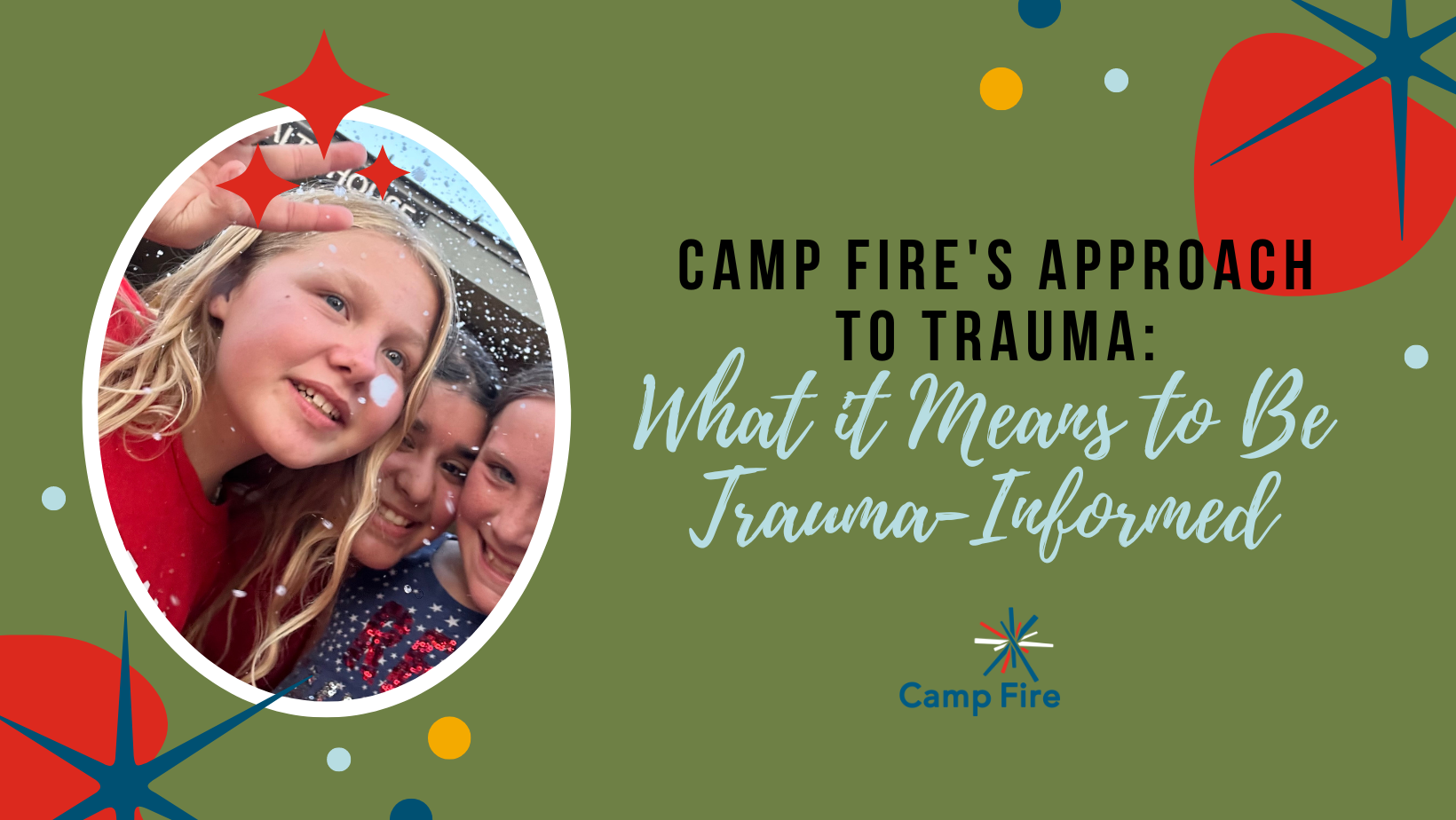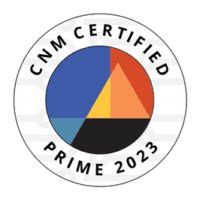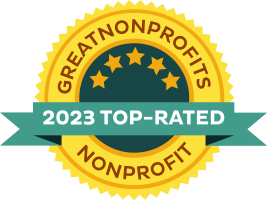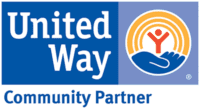This blog previously appeared on CampFire.org.

You’ve heard us say it many times: Growing up is hard. That’s the why behind everything we do. But when we say hard… just how hard are we talking?
Right now, really hard. Like, clinically hard. We’re in a youth mental health crisis, and one of the underlying causes is trauma.
What is trauma?
The National Child Traumatic Stress Network gives us a simple definition of trauma:
“When a child feels intensely threatened by an event [they] are involved in or witnesses, we call that event a trauma.”
Trauma has many sources: Child abuse and neglect, domestic violence, community violence, bullying, medical events, disasters or other emergencies, loss of a loved one, racism/discrimination, family instability, worldwide pandemics — the list goes on. Researchers are even beginning to make the link between climate change and trauma.
Not every stressful event automatically leads to trauma, and individual circumstances (age, cultural beliefs, the presence or absence of a support system, etc.) around an event may lead to differing effects in different people.
“A particular event may be experienced as traumatic for one individual and not for another,” explains the Substance Abuse and Mental Health Services Administration (SAMHSA).
What happens to us in early childhood influences the people we become. “[But] it isn’t just something that happens to kids,” said Nikki Roe Cropp, Camp Fire’s Senior Director, Program Effectiveness. “It’s a human experience.”
Many of us experience adversity that has a lasting impact on our physical and emotional health — no matter our age. The book What Happened to You? by brain development and trauma expert Dr. Bruce Perr and Oprah Winfrey suggests healing can begin with a shift to asking, “What happened to you?” rather than “What’s wrong with you?” or “Why are you behaving that way?”
What happened to us in childhood is a powerful predictor of our risk for health problems down the road and offers scientific insights into the patterns of behaviors so many struggle to understand.
What does trauma do to the brain?
When we experience something traumatic, our brain stem takes over to help us survive. Our stress hormones kick in and enable us to do whatever needs to be done to get through (fight, flight, freeze, fawn). The cognitive and emotional processing parts of our brains take a back seat.
These are helpful responses in the moment, but when the danger is past, the brain and body aren’t always able to shift back into a non-reactive mode. Our brains can stay on high alert, keeping us stuck in those emergency reaction patterns, making us act, feel and think in ways that others find hard to understand.
That stuckness is particularly damaging to developing brains. The National Child Traumatic Stress Network explains:
“When a child is experiencing traumatic stress, these reactions interfere with the child’s daily life and ability to function and interact with others. … Without treatment, repeated childhood exposure to traumatic events can affect the brain and nervous system and increase health-risk behaviors (e.g., smoking, eating disorders, substance use, and high-risk activities). Research shows that child trauma survivors can be more likely to have long-term health problems (e.g., diabetes and heart disease) or to die at an earlier age.”
The key phrase here is “without treatment.” Trauma may be almost unavoidable, but it’s definitely not untreatable. There are many evidenced-based treatments for traumatic stress, and there are many ways that those of us who aren’t mental health professionals can help, too.
We call those ways a “trauma-informed approach.”
What is a trauma-informed approach to working with youth?
“Trauma-informed care is being aware of what young people are bringing with them,” said Ben Matthews, Camp Fire’s Diversity, Equity, Inclusion & Access Manager.
Indeed, SAMSHA defines a trauma-informed approach as:
“A program, organization, or system that is trauma-informed realizes the widespread impact of trauma and understands potential paths for recovery; recognizes the signs and symptoms of trauma in clients, families, staff, and others involved with the system; and responds by fully integrating knowledge about trauma into policies, procedures, and practices, and seeks to actively resist re-traumatization.”
SAMHSA lays out six principles for trauma-informed programs:
- Safety
- Trustworthiness and transparency
- Peer support
- Collaboration and mutuality
- Empowerment, voice and choice
- Cultural, historical and gender issues
How does Camp Fire use trauma-informed principles?
1. Trauma-informed principles are embedded into our framework. SAMHSA’s trauma-informed principles line up well with Camp Fire’s values.“Trauma-informed care is very much baked into our program framework,” said Nikki, pointing to Camp Fire’s emphasis on safe interactions, connected relationships, youth voice and inclusivity. “These things are good for everybody, but they are particularly valuable for kiddos who have experienced trauma or toxic stress.”Many of Camp Fire’s foundational practices — time in nature, routines and rituals, emotional check-ins, relationship building, volunteering — are now known to be trauma-informed tools that can help release toxic stress. Camp Fire also offers some specific programming for young people who have shared experiences of trauma, including El Tesoro de la Vida Grief Camp.
2. We train our staff on trauma-informed approaches. Camp Fire’s national Learning Lab has a variety of courses to help staff learn trauma-informed strategies, and affiliates do their own training as well.“It’s so important to understand the effects of stress and trauma on the brain and how that impacts behavior,” said Nikki. “We can look at behavior through the lens of trauma and unmet needs. It’s not, ‘What’s wrong with this kid?’ It’s, ‘What happened to this kiddo in the past and how does that inform what they need right now?’”Part of being a trauma-informed organization is not only training staff, but supporting their mental health. “Providing support for our staff gives them the capacity to support young people,” said Ben, who shared that Camp Fire National Headquarters builds extra mental health time into every pay period.
“We need to connect our staff to themselves, others and nature before they can provide that for kids, too,” agreed NIkki. “With trauma-informed care, you have to continuously work on and care for yourself.”
3. We do our historical/community trauma homework. “Even if we can’t be fully prepared for what every single individual is bringing in, we can know what historic trauma a community might have experienced,” said Ben. “We can educate ourselves prior to folks showing up.”Camp Fire began adding community-specific trauma training to our toolbox alongside our CAMPER grant work to improve camp access for historically excluded groups. Camp Fire also partners closely with organizations like Transplaining for Camps, S’more Summer, The Trevor Project, the National Indian Education Association to learn how to support campers who might have experienced trauma because of their identities.
4. We partner with other trauma-informed organizations. On a national level, Camp Fire has worked with Let’s Empower, Advocate, and Do Inc. (LEAD), the Alliance for Camp Health, On Our Sleeves and others to both educate staff and further conversations about youth trauma and mental health.Our affiliates also form relationships with local organizations for both training and resource sharing. “For example, Camp Fire Green Country works with the local LGBTQ2s+ organization and the shelter that serves youth experiencing homelessness,” said Ben. “They work with these folks to know what the situation is for young people accessing their services and they also do cross training for each other.”
5. We resist retraumatization by creating safe spaces. Camp Fire’s first priority is making sure young people are safe, both physically and emotionally. Camp Fire has extensive child safety and protection protocols, and many summer camps now have a designated inclusion specialist or team ready to address issues that impact emotional safety as they arise.“It’s also important to recognize that Camp Fire has been part of trauma for particular communities,” said Ben, referencing past practices of cultural appropriation that the organization has been working to identify, address and repair.“Our work to end cultural appropriation is a good example of learning how we harmed and turning that knowledge into program practices that minimize the potential for re-traumatization,” Nikki said.
6. We connect young people and their families to trauma-treatment resources. When young people are dealing with serious trauma after-effects, Camp Fire helps connect them to professionals who can help. Programs held in schools collaborate with the school’s mental health staff. A few camps have social workers on staff, and all programs have local mental health resource lists and crisis contacts on hand to share with kids and families who need them.
Our trauma-informed knowledge and practices will grow as we continue to find ways to help connect kids to nature, others and themselves. We may not be able to make growing up easy, but with trauma-informed approaches, we can make it kinder, more connected and full of hope.
s p a c e
Resources:
- “About Child Trauma” and “Trauma Types,” The National Child Traumatic Stress Network. Accessed 13 July 2023.
- “Climate Change and Trauma,” International Society of Traumatic Stress Studies, istss.org, Accessed 13 July 2023.
- “How Trauma Changes the Brain,” Boston Clinical Trials, bostontrials.com. 10 June 2020. Accessed 13 July 2023.
- “SAMHSA’s Concept of Trauma and Guidance for a Trauma-Informed Approach,” SAMSHA, DHS, July 2014.






